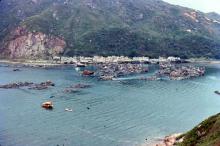The Teia Maru sets sail, having loaded 88 Hong Kong repatriates - 73 Canadian, 13 Latin American and 2 American - and some passengers for the Philipines.
The repatriates include American writer Emily Hahn. Hahn had turned down repatriation in June 1942 so that she could help her POW lover, Major Charles Boxer, but now circumstances are different and she feels the risk to her and her daugher Carola outweighs any advantages in remaining.
Otherwise, most of the repatriates are Canadian, including the Roman Catholic Father Charles Murphy, reluctantly leaving for health reasons. Morris 'Two-Gun' Cohen's on board, eighty pounds lighter than when he entered camp.
Clifton Large, aged 22, refuses repatration because he won't leave Mabel Redwood. Large's parents refuse to leave too, choosing to stay with their son.
One repatriate, Mr. E. D. Robbins, returned to Hong Kong soon after liberation. He told the China Mail that conditions on the ship were worse than at Stanley: the Japanese crew were intent on making as much money out of the passengers as possible, the food was inadequate so the purchase of supplements was essential, but, while those being sent home from Shanghai were provided with 5000 yen, ex-Stanleyites were given only a monthly allowance of 29 yen.
Sources:
http://www.combinedfleet.com/Teia_t.htm
Hahn: Emily Hahn, China To Me, 1986 ed., 421
Murphy: Mabel Redwood, It Was Like This, 2001, 152
Cohen: Daniel S, Levy, Two-Gun Cohen: A Biography, 1997, Kindle Edition, Location 5521
Large: http://groups.yahoo.com/group/stanley_camp/message/1414
Robbins: China Mail, October 1, 1945

